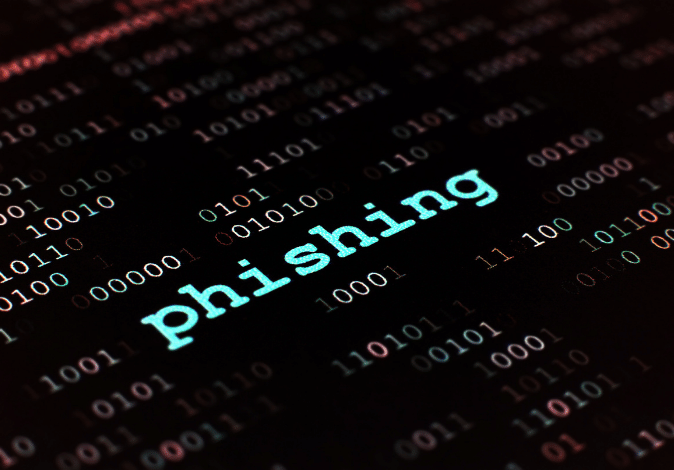Why Vishing Attacks Matter in a Zero Trust Security Model
Why Vishing Attacks Matter in a Zero Trust Security Model
The importance of network security is growing rapidly for everyone. As this arm of cybersecurity evolves so do the threats. Some bad actors have left traditional phishing tactics in the past and graduated to vishing, which involves attackers using voice communication to manipulate individuals into providing confidential information. Vishing attacks pose a significant threat to organizations implementing zero trust security models. We will explore what vishing attacks are, how they differ from phishing attacks, the signs of a vishing attack, and the future of vishing attacks in a zero trust security model.
What is vishing?
Vishing represents a sophisticated form of social engineering where attackers, masquerading as legitimate entities, employ voice communication as their weapon of choice to dupe individuals into surrendering sensitive information. This method contrasts starkly with the digital footprints left by traditional cyberattacks, leveraging the immediacy and perceived authenticity of a phone call to create a compelling narrative. The attackers behind vishing are adept at exploiting human psychology, understanding that people are generally more trusting and willing to engage in a conversation, which increases the likelihood of divulging confidential information over the phone.
The mechanics of a vishing attack can vary, but the essence remains the manipulation of trust. Vishing attacks are designed to get private information and can target individuals and businesses. Attackers might impersonate representatives from reputable organizations — banks, tech companies, or government bodies — to establish credibility. They craft scenarios of urgency or distress, claiming issues with accounts or identity verification problems, to elicit a rapid response from their targets. The conversation's natural flow, combined with skillful social engineering techniques, can disarm skepticism, leading individuals to share personal details, financial information, or corporate data without the usual reservations they might have online.
Understanding vishing's nuances is vital. These attacks don't rely on the digital breadcrumbs like phishing — there are no suspicious email links to avoid or questionable attachments to not open. Instead, the battleground is psychological, making the defense against vishing uniquely challenging. It requires not just technological safeguards but a robust culture of security awareness among individuals and organizations. Educating stakeholders about the potential for deceit in unsolicited calls, the importance of verifying the caller's identity, and the necessity of safeguarding personal and professional information is paramount.
In the evolving landscape of cybersecurity threats, vishing occupies a sinister niche. Its reliance on human interaction and verbal communication sidesteps many conventional security protocols, presenting a potent threat even to those well-versed in digital defense strategies. As we delve deeper into strategies to counteract these threats within zero trust frameworks, understanding the human element—our vulnerabilities and strengths—becomes as crucial as deploying the latest in security technology. Vishing, with its old-school tactics and new-age execution, reminds us that at the heart of cybersecurity, the human factor remains the most unpredictable and, therefore, the most compelling to protect against.
Vishing vs. Phishing
Understanding the distinct methodologies of vishing and phishing attacks is pivotal in fortifying an organization's defenses against the myriad of cyber threats prevalent today. While both strategies are designed to deceive and manipulate individuals into surrendering confidential information, their operational tactics diverge significantly, primarily in their chosen modes of communication and execution.
Phishing attacks are primarily digital, leveraging emails or text messages as conduits to disseminate deceit. These attempts often employ the guise of legitimacy through the creation of counterfeit websites or the inclusion of malicious attachments, designed to ensnare unsuspecting victims. The digital nature of phishing allows for a broad reach, targeting vast numbers of individuals with the click of a button. Here, the attackers bank on the odds, knowing that even a minimal response rate can yield valuable data.
Vishing attacks, on the other hand, introduce a more personal and direct approach. Utilizing voice communication, typically via telephone calls, vishers create a sense of immediacy and authenticity that is harder to replicate in written form. This method capitalizes on the human propensity for trust and the natural inclination to respond to a perceived authority figure or an urgent situation. In 2021, $29.5 billion was lost due to vishing attacks. By invoking scenarios that demand immediate attention—such as purported issues with financial accounts or identity verification—vishers adeptly manipulate the psychological dynamics of trust and fear, coaxing their targets into divulging sensitive information without the hesitation they might exhibit online.
Another differentiator is the technological aspect. Phishing can be combated with software solutions that filter out suspicious emails or alert users to potential fraud. Vishing, devoid of such digital fingerprints, challenges organizations to adopt a more nuanced defense strategy, heavily reliant on education and awareness. It demands a proactive approach, wherein individuals are equipped with the knowledge to question and verify the legitimacy of unsolicited calls, a task that is inherently more complex than identifying a fraudulent email.
In comparing vishing and phishing, it becomes evident that while the end goal remains constant, the tactics employed exploit different vulnerabilities. Phishing preys on the inattentiveness and curiosity that can arise during digital navigation, whereas vishing exploits the human elements of trust and urgency. Recognizing these distinctions is crucial for organizations aiming to shield their stakeholders from these invasive tactics, ensuring a comprehensive defense strategy that addresses the multifaceted nature of cyber threats in the modern era.
What are the signs of a vishing attack?
Identifying the hallmarks of a vishing attack is a critical skill in safeguarding both personal and organizational data. These attacks, distinguished by their use of voice communication, often deploy a series of psychological tactics designed to catch individuals off-guard. One of the primary signs of a vishing attempt is the presence of urgent or emotionally charged language. Attackers frequently concoct scenarios that necessitate immediate action—such as claiming that an account has been compromised or asserting that immediate payment is required to avoid legal repercussions. This tactic preys on the victim's sense of urgency, clouding their judgment.
Another red flag is the solicitation of sensitive information. Vishing attackers typically seek financial details or Social Security numbers. Legitimate entities rarely, if ever, request personal details or financial information over unsolicited phone calls. If a caller prompts for this type of information under the guise of verifying identity or rectifying an account issue, it's a potent indication of a vishing attempt.
Caller ID spoofing is yet another technique commonly employed by vishers. This involves altering the caller ID to mimic that of a credible organization, such as a bank or a governmental agency, thereby lending an air of legitimacy to the call. Victims are more likely to engage when the call appears to originate from a known and trusted source.
Additionally, the use of professional jargon or overly technical language can serve as a mechanism to intimidate or confuse the recipient, making them more susceptible to compliance. This strategy exploits the recipient's possible lack of knowledge in a specific domain, pressuring them into action without proper verification.
Awareness of these signs is paramount. Encouraging a culture of skepticism and verification can significantly diminish the success rate of vishing attacks. It's crucial for individuals to remember that it is both prudent and acceptable to question the validity of unexpected requests for information, regardless of the perceived urgency or authority of the caller. Empowering oneself and one's team with this knowledge is a fundamental step in navigating the complex landscape of cybersecurity threats, ensuring that we remain vigilant in the face of evolving tactics.
The Future of Vishing Attacks and Zero Trust
As the digital threat landscape morphs with advancing technology, the interplay between vishing attacks and zero trust security frameworks becomes ever more critical. The inherent adaptability of vishing—leveraging human psychology and the element of voice communication—means that as defenses evolve, so too will the strategies of those aiming to breach them. The adoption of zero trust principles, which negate inherent trust and instead verify each attempt at access, provides a robust foundation for mitigating the risks associated with these attacks. However, it also pushes cybercriminals to innovate, seeking methods to circumvent the comprehensive checks that zero trust environments demand.In this context, the integration of advanced technologies such as artificial intelligence (AI) and machine learning (ML) becomes indispensable. These tools can offer predictive analytics to identify potential vishing attempts before they reach their intended targets, analyzing call patterns and flagging anomalies that diverge from the norm. Furthermore, the deployment of AI-driven voice recognition and behavioral analysis could serve as a deterrent to vishers, who rely on the anonymity and malleability of voice communications to execute their schemes.Educational initiatives will play a pivotal role in the future defense against vishing attacks within zero trust frameworks. As technology advances, so must the awareness and preparedness of individuals within organizations. Training programs that simulate vishing scenarios, coupled with regular updates on the latest tactics used by attackers, will empower employees to act as the first line of defense, complementing the technological barriers in place.Ultimately, the progression towards a security model that encapsulates zero trust principles signifies a dynamic shift in the battle against cyber threats. As we navigate this evolving battlefield, the emphasis on continuous verification, advanced technological defenses, and informed, vigilant users will be paramount in diminishing the impact of vishing attacks. This proactive, informed approach signifies not just a defense strategy but a comprehensive cultural shift towards securing our digital frontiers against the insidious nature of voice-based social engineering.








